Key takeaways
- A musician portfolio should blend bio, music samples, and performance history to narrate the artist’s journey and versatility.
- Selecting an appropriate venue, like The O2 Arena, enhances audience connection and overall performance experience.
- Preparation involves mental, physical, and emotional aspects, helping artists manage nerves and adapt to the performance environment.
- Engaging with the audience and adapting to challenges during shows can significantly enhance the performance and personal growth as an artist.
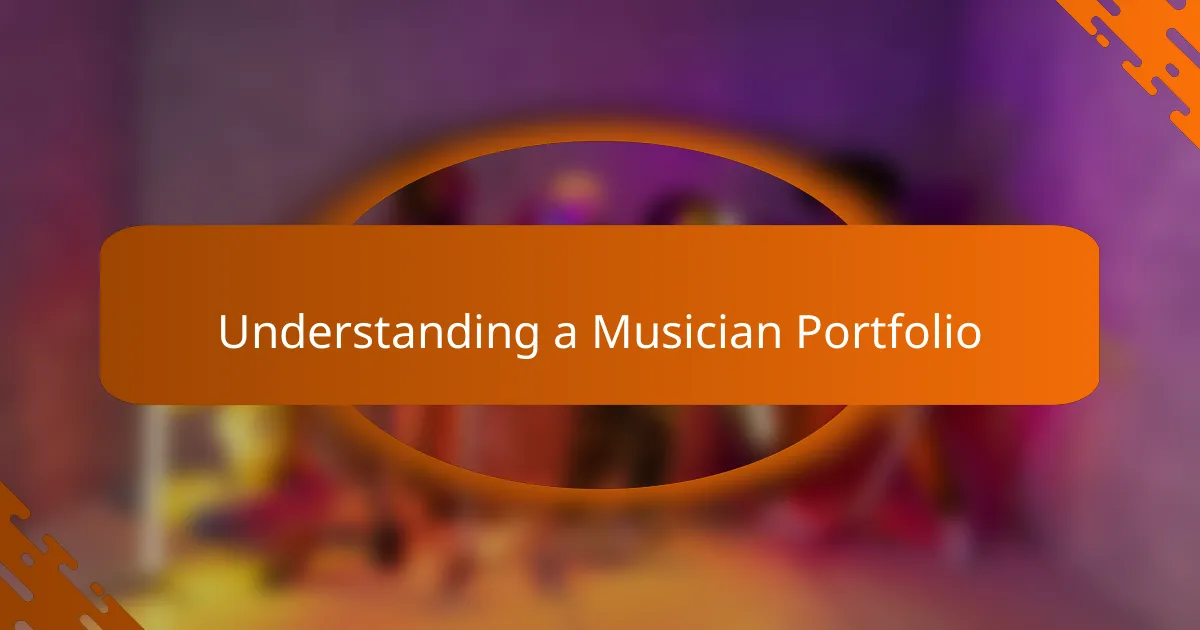
Understanding a Musician Portfolio
When it comes to crafting a musician portfolio, I’ve found that it’s about more than just showcasing your work. It’s a narrative that weaves through your experiences, skills, and personal style. Each piece you include should not only highlight your technical abilities but also tell a story about who you are as an artist.
From my own experience, I’ve discovered that including live performance footage can create an emotional connection with potential fans and industry professionals. I remember when I first watched a video of my performance at The O2 Arena; seeing the crowd and feeling that energy instantly reminded me of the passion I have for music.
A well-rounded portfolio should balance various elements: bio, music samples, and performance history. This mix not only provides insight into your musical journey but also showcases the versatility that today’s music landscape demands.
| Portfolio Element | Purpose |
|---|---|
| Bio | Establishes your identity and personal journey |
| Music Samples | Showcases your sound and creativity |
| Performance History | Highlights experience and live engagement |

Importance of Venue Selection
Selecting the right venue for a performance can truly make or break the experience. I remember my first show at The O2 Arena, where the ambiance struck me the moment I stepped inside. The combination of incredible acoustics and a capacity that can hold over 20,000 fans creates an electrifying atmosphere that is truly unforgettable.
In my opinion, playing at a venue that resonates with your music style enhances the connection with the audience. For instance, a large arena like The O2 brings a sense of grandeur that smaller venues can’t replicate, and the energy from a large crowd can fuel your performance in ways you never thought possible. Reflecting on my experience, I could feel the energy bouncing off the walls, which motivated me to give my best.
Here’s a comparison of venue types, highlighting why venue selection matters:
| Venue Type | Key Features |
|---|---|
| Small Venue | Intimate setting, direct audience interaction |
| Medium Venue | Balanced audience connection with professional lighting and sound |
| Large Arena | Massive audience, spectacular production opportunities |
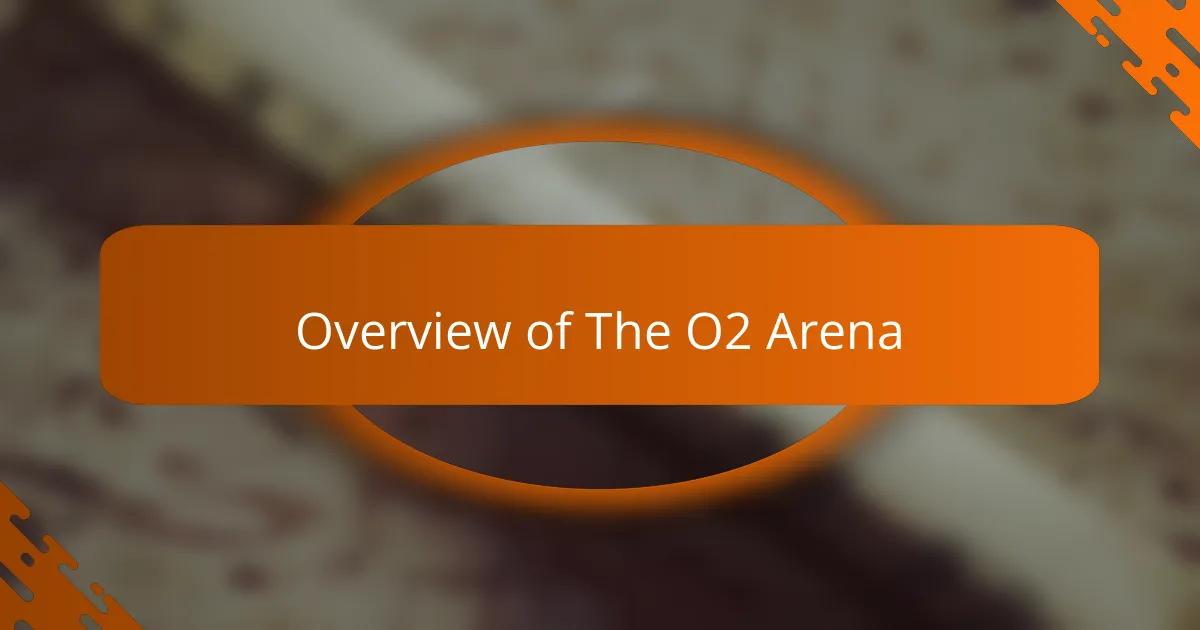
Overview of The O2 Arena
The O2 Arena, located in Greenwich, London, is one of the world’s most iconic venues. I remember the first time I walked in; the sheer size and energy of the place took my breath away. With a seating capacity of up to 20,000, it hosts a variety of events, from concerts to sports, making it a bustling hub of entertainment.
Visiting the O2 is not just about the performances; it’s the atmosphere that really captivates you. The buzz in the air before a show is electric. I can still recall the excitement as fans gather, sharing stories and anticipating the unforgettable experience that awaits them inside.
Here’s a quick comparison of The O2 Arena with some other notable music venues:
| Venue | Capacity |
|---|---|
| The O2 Arena | 20,000 |
| Madison Square Garden | 20,789 |
| Staples Center | 19,068 |
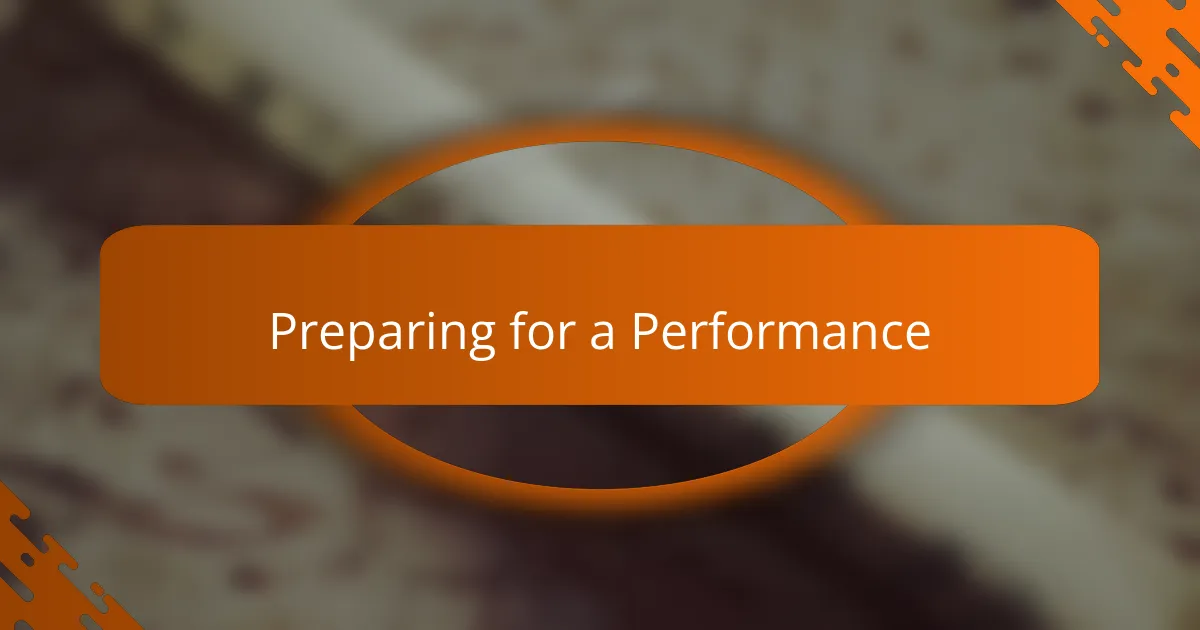
Preparing for a Performance
Preparing for a performance at The O2 Arena was both thrilling and nerve-wracking. I remember the rush of energy as I packed my gear; every instrument and piece of equipment felt like a lifeline. The scale of the venue made me realize the importance of preparation—both mentally and physically.
I took time to visualize the stage and my performance. Practicing in the days leading up to the event helped ease my nerves. I recall standing in front of the mirror, rehearsing my setlist and imagining the crowd’s energy. It’s incredible how visualization can create a sense of familiarity that calms the nerves.
Here’s a comparison table that outlines the key aspects of preparation:
| Preparation Aspect | My Experience |
|---|---|
| Mental Preparation | Visualizing the stage and the audience |
| Physical Preparation | Daily rehearsals and tuning instruments |
| Emotional Preparation | Channeling excitement and managing nerves |
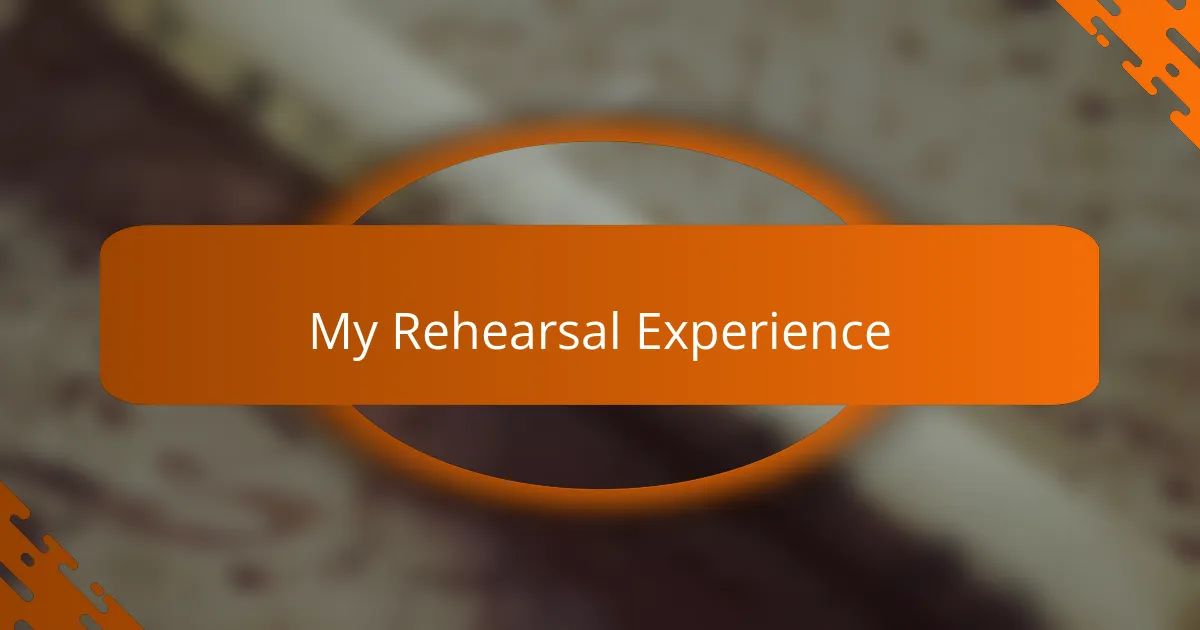
My Rehearsal Experience
My rehearsal experience at The O2 Arena was nothing short of exhilarating. I still remember the moment I stepped onto that massive stage; the energy was palpable. The state-of-the-art sound system coupled with the vastness of the venue made me feel both nervous and excited, and I could hardly believe that I would soon be sharing this space with so many fans.
As we ran through our set, I noticed that every note echoed beautifully in the expansive arena. I recall a moment when I glanced at my bandmates, and we all shared a knowing smile – we were in our element. The rehearsal not only tested our skills but also reinforced our bond as musicians. The thrill of performing in such a renowned venue made every hour spent rehearsing feel completely worthwhile.
| Aspect | Experience at The O2 Arena |
|---|---|
| Atmosphere | Electric and inspiring, filled with anticipation |
| Sound Quality | Exceptional acoustics that enhanced our performance |
| Emotional Impact | A profound sense of accomplishment and excitement |

Challenges Faced During the Performance
Performing at The O2 Arena is an exhilarating experience, but it certainly comes with its fair share of challenges. I remember feeling a rush of excitement turn into nerves as I stepped on stage, with thousands of eyes fixed on me. The sheer size of the venue can be daunting, making it easy to feel small amidst such grandeur, which can throw off your focus if you let it.
One of the biggest challenges I faced was managing sound quality. The acoustics in such a large space are tricky, and I quickly learned that what sounds good on stage may not translate the same to the audience. Adapting to the energy of the crowd is both thrilling and demanding; you can feel their excitement but also the weight of their expectations.
- Adjusting to the arena’s acoustics required constant monitoring and feedback.
- Staying connected with my band members was crucial, as distractions from the large audience could break our flow.
- Overcoming stage fright in such a colossal venue pushed me to find my confidence.
- Navigating the logistics of equipment setup and sound checks needed meticulous planning.
- Managing the emotional highs and lows, from pre-show jitters to the after-performance adrenaline rush, was a rollercoaster.
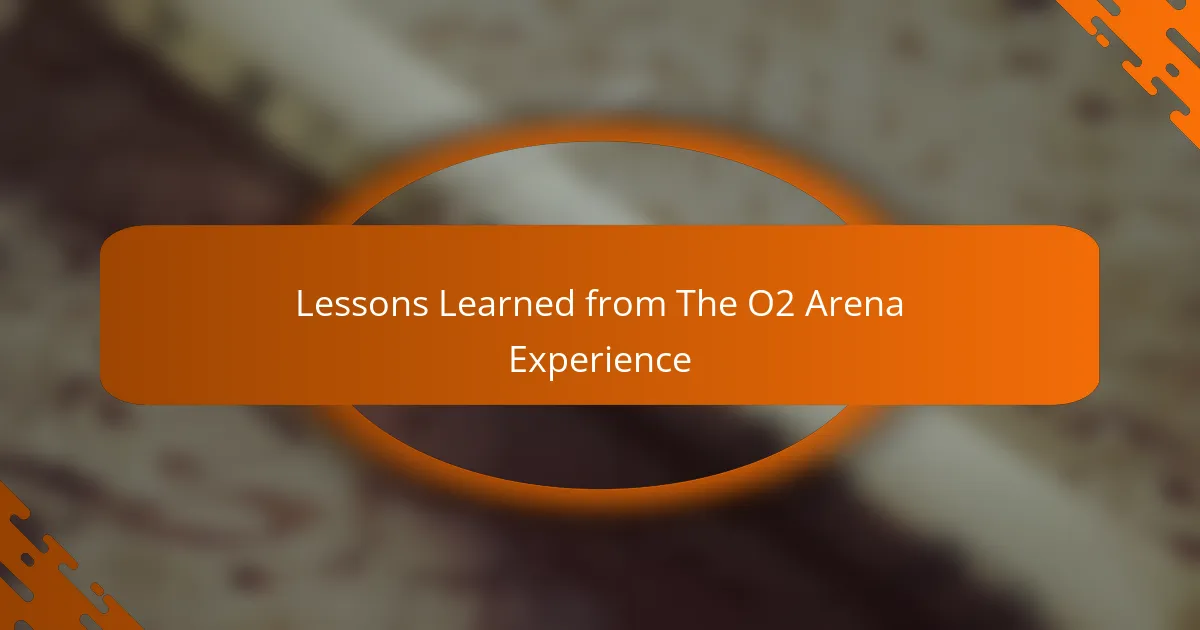
Lessons Learned from The O2 Arena Experience
The experience at The O2 Arena taught me valuable lessons about the importance of adaptability. I found myself navigating unexpected challenges, like technical issues during the performance. This reminded me that, as a musician, being flexible and staying calm under pressure can make a significant difference. Have you ever faced a sudden change during a performance? Adjusting quickly can often save the day.
Another lesson that stood out to me was the power of connection with the audience. At The O2, I could feel the crowd’s energy washing over me, and it motivated me to give my all. I realized that engaging with the audience, whether through eye contact or spontaneous interactions, enhances the overall experience for both the performer and the fans. It’s fascinating how a simple smile or gesture can create an unforgettable moment.
Finally, I learned that every performance is an opportunity for growth. Reflecting on my experience, I recognized how much I developed as an artist that night. The thrill of stepping onto such a grand stage pushed me beyond my comfort zone. I’ve come to appreciate that these moments of challenge are often the catalysts for creativity and self-discovery. How has your own journey as a musician shaped your growth?